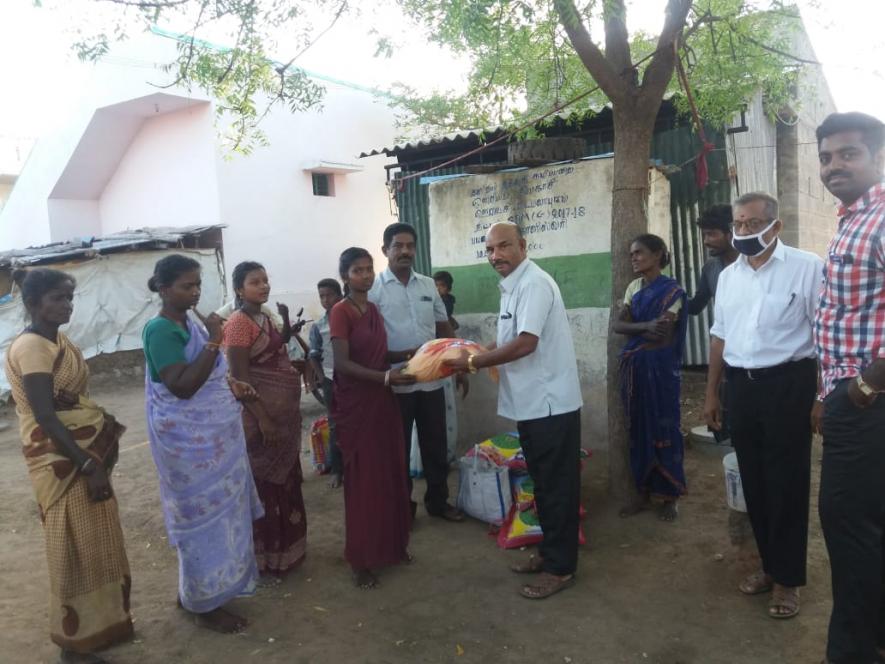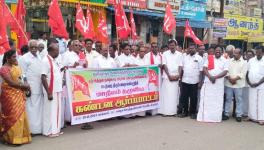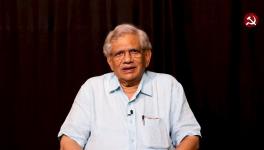COVID-19 Lockdown: Traditional, Folk and Performing Artists Bereft of Relief in Tamil Nadu

The rural and semi-urban areas of Tamil Nadu can be seen buzzing with different art and music forms during March, April and May every year. The temple festivals take place largely during the Tamil months of Panguni, Chithirai and Vaikasi, employing several thousands of folk and performing artists. With the nationwide lockdown, these performers are bereft of any income during the season.
The now defunct welfare board has been vested with the responsibility of distributing Rs 1,000 as relief for a little over 35,000 artists, while the total number of artists and performers is as high as 4 lakh across the state. With the season ending without any income, the ensuing off season will force these artists into starvation.
‘NO INCOME DURING SEASON’
The artists depend on the summer season to earn some money through performances to make their living. They also undertake daily wage works including construction work during the off season to complement their income. However, the lockdown has shut the door for any kind of income for these performers. Adhavan Dheetchanya, general secretary of Tamil Nadu Progressive Writers’ and Artists Association (TNPWAA), said, “The artists are struggling to meet their daily needs during the lockdown. The Department of Arts and Culture has announced this minor relief only after demands from TNPWAA and 37 other organisations working with traditional artists.”
‘ARTISTS STARVING’
The condition of the artists who enthrall the public with classic performance in various art forms have already worsened. The previous years too were as bad for them as the present year due to the Gaja cyclone and general elections.
“Many artists are already starving as the lockdown has crossed a month now. With the contribution of a few individuals and support of organisations like Tamil Nadu Science Forum (TNSF) and Democratic Youth Federation of India (DYFI), the TNPWAA distributed relief material to 200 artists and their families in Krishnagiri district,” said Dheetchanya.
The government needs to step up to ensure that the artists are provided relief at the earliest and are prevented from starving. The existing mechanism of distributing relief has also attracted severe criticism.
‘WELFARE BOARD DEFUNCT’
The welfare board established for the folk artists in 2008 was dissolved in 2015. The state government announced a relief of Rs 1,000 and ration for the 35,850 artists who were registered with the now defunct welfare board.
Prof R Kaleeswaran, convenor of the Alternative Media Centre, said, “The government has considered only the artists who were registered with the welfare board till 2015. This itself is an unscientific method of distributing relief. After the welfare board was dissolved, the artists registering in the regional offices were issued identity cards. But even after accepting them as traditional artists, the government has refrained from distributing relief.”
The data collected by the St Xavier’s College, Palayamkottai, reveals that around 3,65,000 artists depend on various traditional and folk art forms to earn a living. The organisations have demanded the government to extend relief to all of them.
The artists would not get jobs as soon as the lockdown comes to an end as the festival season would be over soon, say experts.
“The government of Kerala has announced a relief of Rs 8,500 per month. Taking this as reference, the state government should provide the artists at least Rs 5,000 per month for a four-month period. This amount would help them survive the off season starting from June”, demanded Kaleeswaran.
‘INVOLVE IN AWARENESS PROGRAMS’
The traditional artists have been earlier used for awareness programmes of various government projects like campaigning for HIV-AIDS awareness, breast and uterus cancer and education for all.
“The aim of such programmes was achieved with the help of performing and folk artists. The government has resorted to printing notices, placing hoardings and pasting posters for various awareness programmes. These artists can be utilised to create awareness about the COVID-19 for the next six months and the government can pay them,” said Kaleeswaran.
Get the latest reports & analysis with people's perspective on Protests, movements & deep analytical videos, discussions of the current affairs in your Telegram app. Subscribe to NewsClick's Telegram channel & get Real-Time updates on stories, as they get published on our website.
























